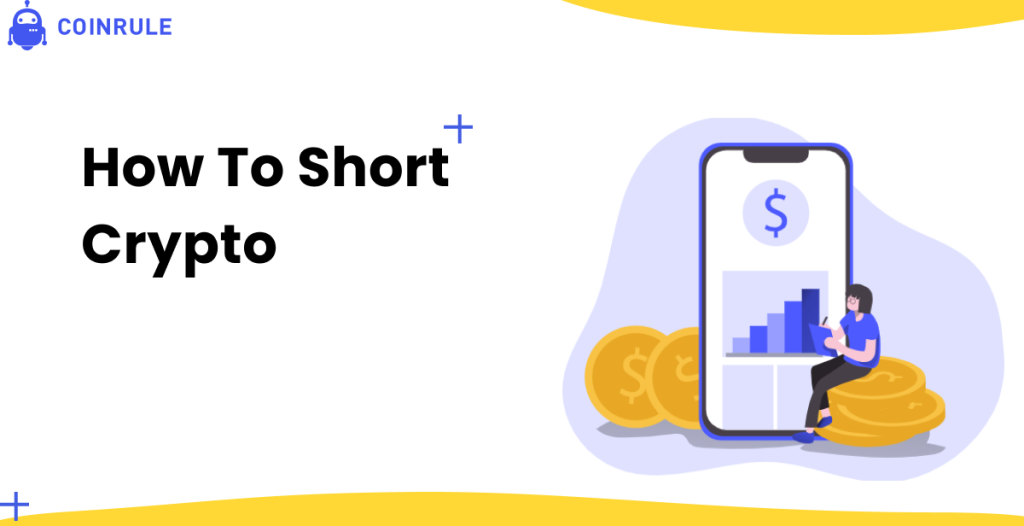In many ways, the stock market is similar to its crypto counterpart, and as such, observing the stock market is a good way to learn how the crypto market works. It’s safe to say that cryptocurrency is a “not-so-direct” replica of the stock market. This is why they both use a number of similar terms, one of which is “going short”.
Going short in simple terms is selling a coin high then buying it back lower. One quality of great investors is an ability the chameleon is widely known for: adaptability. The best investors adapt to changing market conditions which goes to show why crypto investors need to work with diverse strategies.
Currently, the crypto market is approaching bearish conditions while to some, the bear market is already here. However, there are still ways to profit from the market. No matter the direction of prices, there is always a way to make gains, even in the worst of market conditions.
How? By ‘shorting crypto.’
This article will go through what it means to “short crypto” and all you need to know about this trading strategy.
Before we start: this is not beginner’s stuff and using leverage can be dangerous. Be sure you know what you do, do not risk more than you can afford to lose. Ultimately, trading is a game of survival. You want to keep your positions and live to fight another day.
With that warning, let’s begin!
Understanding Long and Short Positions
To better understand what it means to “short” sell crypto, we need to understand what “long positions” and “short positions” are.
Both positions reflect the possible direction of prices in the market.
Traders take a long position during bullish market conditions (when prices go up). This means that they buy crypto and hope that prices increase. When a trader goes long, they hope to profit from the upward price shift.
Conversely, in cases of a bear market (when prices decline), traders can take a short position or go short. In this case, the trader sells crypto and hopes that the prices drop from that given point so they can buy back into the market.
How to short crypto?
The simple answer:
You sell at a higher price to purchase back when the prices are lower.

However, it is not that simple.
The process of selling short is pretty complex and can be pretty risky. Most people find it harder than trading crypto. However, with a proper understanding and access to information, “shorting” cryptocurrency can be an exciting as well as highly profitable strategy.
The most exciting part of shorting crypto is that it can be done with borrowed assets i.e. on leverage. There are different ways to go about this, and we will highlight each method and explain its peculiarities.
Short Selling with Derivatives
Also known as margin trading or leverage trading, shorting derivatives is one of the easiest ways to short crypto. It allows you to borrow from a broker and stake on a long or short position. Depending on the market’s direction, traders will make gains or losses.
Derivatives have been around for ages, and they offer new ways to invest and manage funds. A Derivative is a contract or an agreement to buy or sell a particular cryptocurrency at an agreed time and for an agreed price.
The value of a derivative depends on the expected value of an underlying asset. The future projection of price movements will determine the value of any derivative. This value is backed up via an agreement with an exchange.
There are three main types of derivatives in crypto. However, others are a modification of the three main types.
These are the three primary forms of derivatives: Swaps, Futures, and options
As the name implies, a swap happens when a cryptocurrency is exchanged for another — E.g. purchasing bitcoins with altcoins.
Futures are financial contracts where a buyer/seller is obliged to buy or sell an asset (in this case, a cryptocurrency) at a fixed price. They are currently the most common crypto derivative in today’s market.
As the name states, options are similar to futures. However, in this case, the buyer/seller holds the right to buy or sell an asset at a particular time and a specific price. There is no obligation to go on with the sale/purchase for options.
Several exchanges trade derivatives, and they all offer varying packages.
E,g, Binance Futures and Bitmex are both available derivatives which allow users to swap more than 140 cryptocurrencies and crypto-assets
Borrow coins from DeFi protocols and sell them to repurchase them
In a world where millions of people still lack access to bank accounts and financial services, Decentralized Finance (DeFi) may be a way out.
According to the Bitcoin Market Journal, “Decentralized finance refers to open-source financial software that aims to provide financial services to anyone with an internet connection.”
With DeFi, users can get similar offerings to what traditional banks offer. The difference? There are no intermediaries, and transactions are done without a middleman. Instead, financial services are run on the blockchain with smart contracts and similar technology.
With DeFi, crypto can be transferred from one wallet to another using a protocols and Smart Contracts backed by Blockchain technology. This makes it possible for traders to earn passive interest in digital assets.
Therefore, with DeFi protocols, investors can leverage a short position and deposit digital assets into money market protocols. Some early adopters in this space are DeFi derivatives platforms like dydx and Mango.Markets.

An excellent example of a DeFi protocol is also AAVE. It allows users to borrow cryptocurrency assets without intermediaries. Built on Ethereum, AAVE is a decentralized lending protocol that is operated by a so-called DAO (decentralized autonomous organization). This means that holders of the token can vote on changes to the protocol.
DeFi protocols are projected to gradually eclipse traditional financial institutions due to their transparency, security, and the programmability of the underlying technology.
Tips for shorting crypto
The crypto market is such that there are always ways to make money, no matter the market condition. Even when the market is crashing, there are still many opportunities to make a bank.
If you are wondering how to start shorting crypto, you should note the following:
- You should only go short when you have clear indications that there is an imminent crash
- Shorting provides unlimited risks that, in some cases, may lead to significant losses as you could use your collateral
- Do not stake assets solely based on their annual percentage yield (APY) as the underlying token in which you get paid could drop in price
- In staking, you also need to consider liquidity. It may look appealing to stake a coin. However, you need to consider whether you can convert your returns back to a stablecoin.
Rounding up
Amongst other reasons, the market crashes due to fear, however, you can make money from falling prices by going short. Even without owning crypto as we have shown.
If you have reasons to believe that a market crash is imminent, then this may be your chance to make profit.
However, it can be pretty risky. So before you get into it, you should consider the impending consequences of your action and weigh them against your risk appetite.
Shorting crypto can be an effective strategy. However, it can also have dire consequences. This is why you need to ‘look before you leap.’
Thank you for reading this article. We hope you learned a thing or two.

